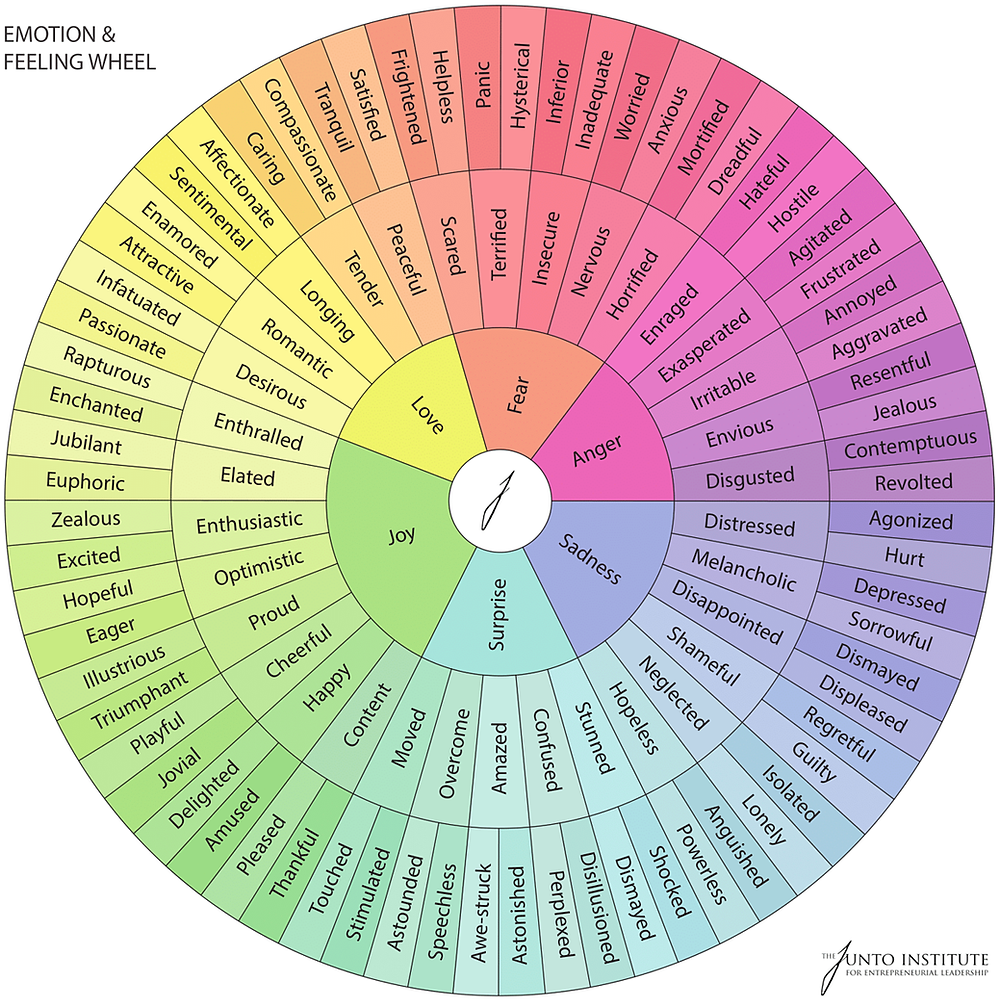Expressions
A common critique of sign language avatars is that they don’t have enough movement on the face. It is preferred that the avatars be as natural as possible to increase legibility and comfort for users. In order to decrease the woodenness of the avatar, it is essential to add facial expressions. This will inject life and meaning into our translations. Thus, I was tasked with creating facial expressions for our avatar.
In the past, research studies have focused primarily on six basic categories of emotion: fear, disgust, surprise, happiness, sadness, and anger. Shichuan Du, Yong Tao, and Aleix M. Martinez, however, researched and authored a paper on compound emotions which combined two categories together to produce a larger range of emotion. They reported that there are more than 6 emotion categories that “are differentially represented by our cognitive and social systems (https://www.pnas.org/doi/pdf/10.1073/pnas.1322355111). Their list grew to the 22 emotions you see in the powerpoint below. Their research propounds that more emotions can be differentiated amongst themselves, and thus, to create a more natural avatar, I modeled our avatar’s expressions after the emotions expressed in their research.
While creating the expressions, I couldn’t help but feel that essential emotions were still missing. Where would love lie in the compounded emotions? What about confusion? Boredom? I propose that several additional emotions can be clearly defined and differentiated. See the emotion wheel below from the Junto Institute.

Here, disgust is not even listed as one of the main 6. This may be because animation research has focused on the Facial Action Coding System revised by Paul Ekman. This system defines a unit number for each action on the face, i.e. inner brow raise(1), lid tightener(7), etc.. These action units are then combined together to define an emotion. Certain emotions have specific movements, for example, Disgust is often expressed with an upper lip raise and lowered brow. Lowered brow is also associated with anger, so I can see how disgust could be interepreted as a sub-category. I don’t believe every emotion on the wheel can be differentiated as distinct. However, I believe there could be distinct differences within a category that are worth exploring. For example, Tranquil and Infatuated in the Love category would likely be expressed within different movements on the face, likewise with Confused and Amazed under the Surprise category. Ultimately, further research can be done between expressions and the facial action coding system to define more specific emotions. The more information and definitions we have about how the face naturally moves, the more accurate and natural our avatar can be.
